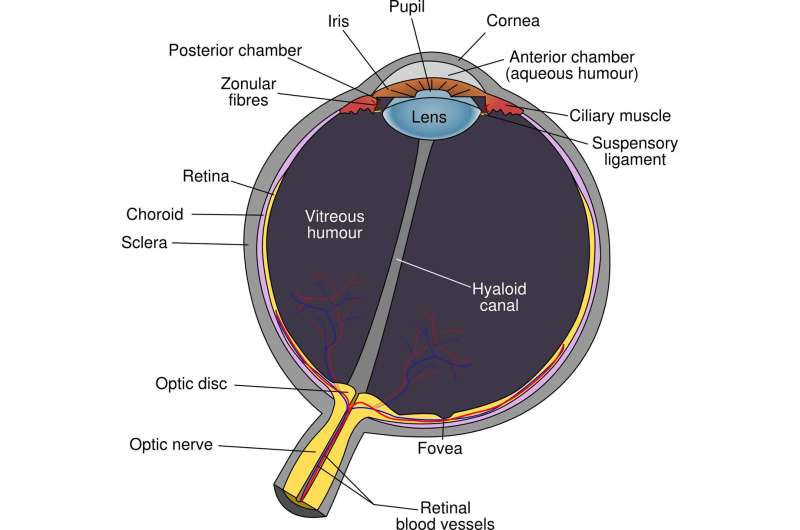Image source: Pixabay/CC0 Public Domain
Retinoblastoma is a rare pediatric cancer with approximately 250,300 new cases in the United States and 8,000 worldwide each year. This cancer grows in the retina, a thin layer of cells at the back of the eye, and is often treatable if diagnosed early. However, if left undiagnosed, retinoblastoma can metastasize and lead to death.
Over the past decade, research has led to significant progress in understanding the disease. David Cobrinik, MD, PhD, contributed to many of these advances through his work at the Vision Center at Children’s Hospital Los Angeles.
Recently, Dr. Cobrinik was invited to write an article on the current understanding of the development and progression of retinoblastoma.This article was published in New England Journal of Medicine.
Retinoblastoma occurs when a specific genetic mutation occurs in a gene called RB1, a tumor suppressor gene. RB1 tells the body to make a protein called pRB. Since the gene’s discovery, when CHLA researchers and others first cloned it for study in the 1980s, research has revealed much about how RB1 and pRB suppress tumorigenesis.
“pRB basically inhibits cell growth,” said Dr. Cobrinik, principal investigator in the Department of Ophthalmology at the Saban Institute. “However, further studies of the pRB protein showed that it is normally expressed in nearly all cells in the body, so the reason why children carrying the inactive RB1 gene develop tumors primarily in the retina remains a mystery.
The Cobrinik lab discovered that the retinal cells in which retinoblastoma originates are cones, the color-sensing cells in the back of the eye. They then showed that cancer only develops when the cones are at a specific intermediate stage of development, after the cones are immature but before they are fully developed and used for vision.
They found that these “mature cones” were extremely sensitive to mutations in the RB1 gene. This is one of the earliest demonstrations that cancer can start at a specific stage of cell development.
Their research also showed that these cones form something called a precancerous lesion, which is thought to be a dormant precursor to cancer. From birth to around 5 years of age, this condition can turn into cancer. Additionally, after retinoblastomas form, they acquire additional mutations that make the cancer more aggressive, harder to treat, and more likely to metastasize.
All the new insights into how retinoblastoma develops reveal potential therapeutic targets for treating this cancer in the future. It also coincides with the development of a new biopsy method that allows doctors to determine the stage of retinoblastoma before treatment begins, led by Jesse L. Berry, MD, and Liya Xu, PhD, CHLA Ocular Oncology Developed by the team.
It is expected that this new understanding of how tumors form, combined with new diagnostic methods, will significantly improve retinoblastoma prognosis, especially for patients whose retinoblastoma is only first detected at an advanced stage.
Dr. Cobrinik was recently recognized by the International Society of Hereditary Eye Disorders and Retinoblastoma for his many contributions to the understanding of this disease. “I felt very lucky and honored to be able to deliver the award speech last summer,” said Dr. Koblinik. “We have learned a lot about this disease. Now we can imagine new paradigms for retinoblastoma treatment in the future.”
More information:
David Cobrinik et al., Origins and Destinations of Retinoblastoma, New England Journal of Medicine (2024). DOI: 10.1056/NEJMra1803083
Provided by Children’s Hospital Los Angeles
citation: Expert reviews the current state of retinoblastoma research (2024, April 22), Retrieved April 22, 2024, from https://medicalxpress.com/news/2024-04-expert-current-state- retinoblastoma .html
This document is protected by copyright. No part may be reproduced without written permission except in the interests of fair dealing for private study or research purposes. Content is for reference only.
#Experts #review #current #status #retinoblastoma #research
Image Source : medicalxpress.com
